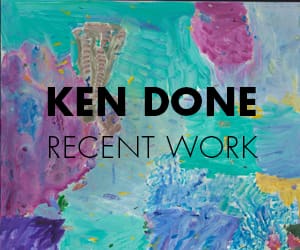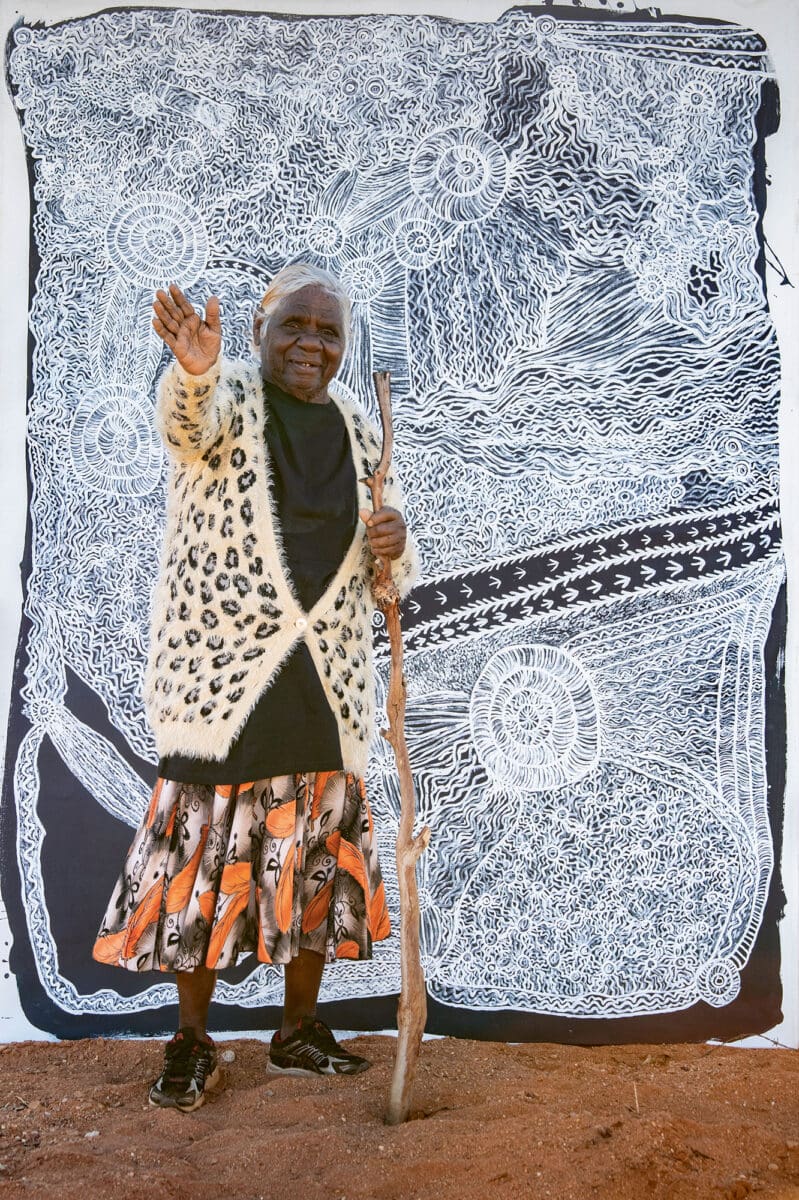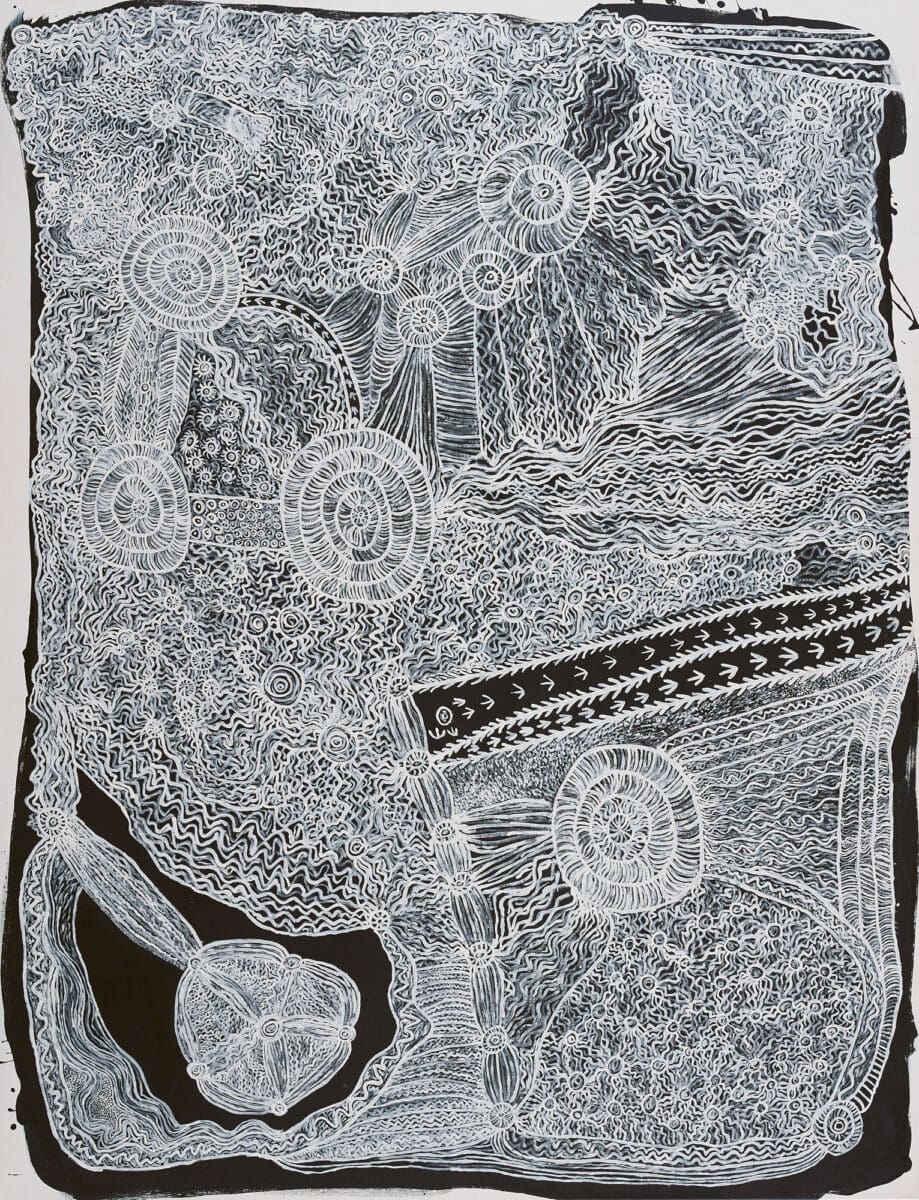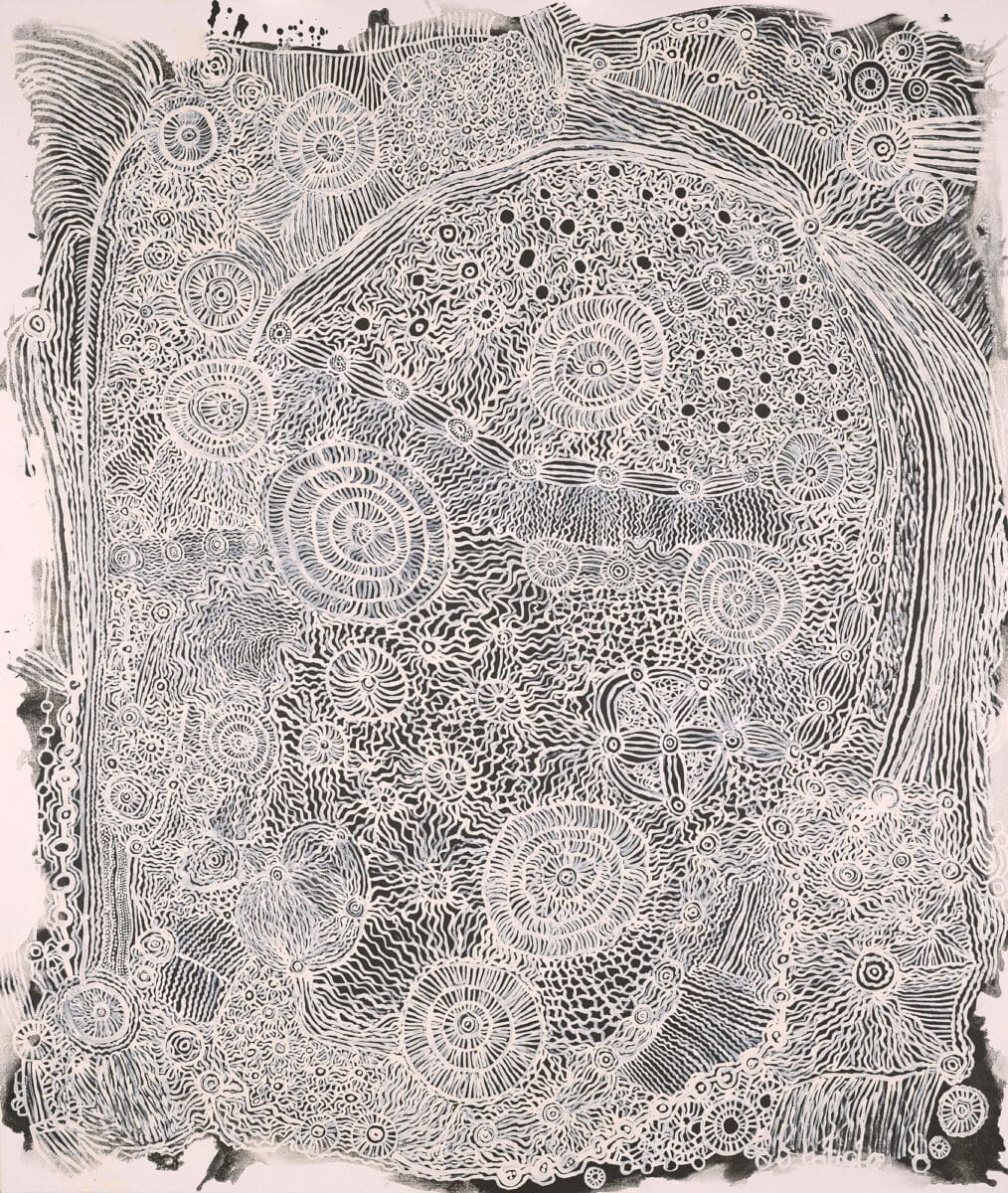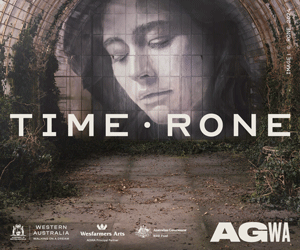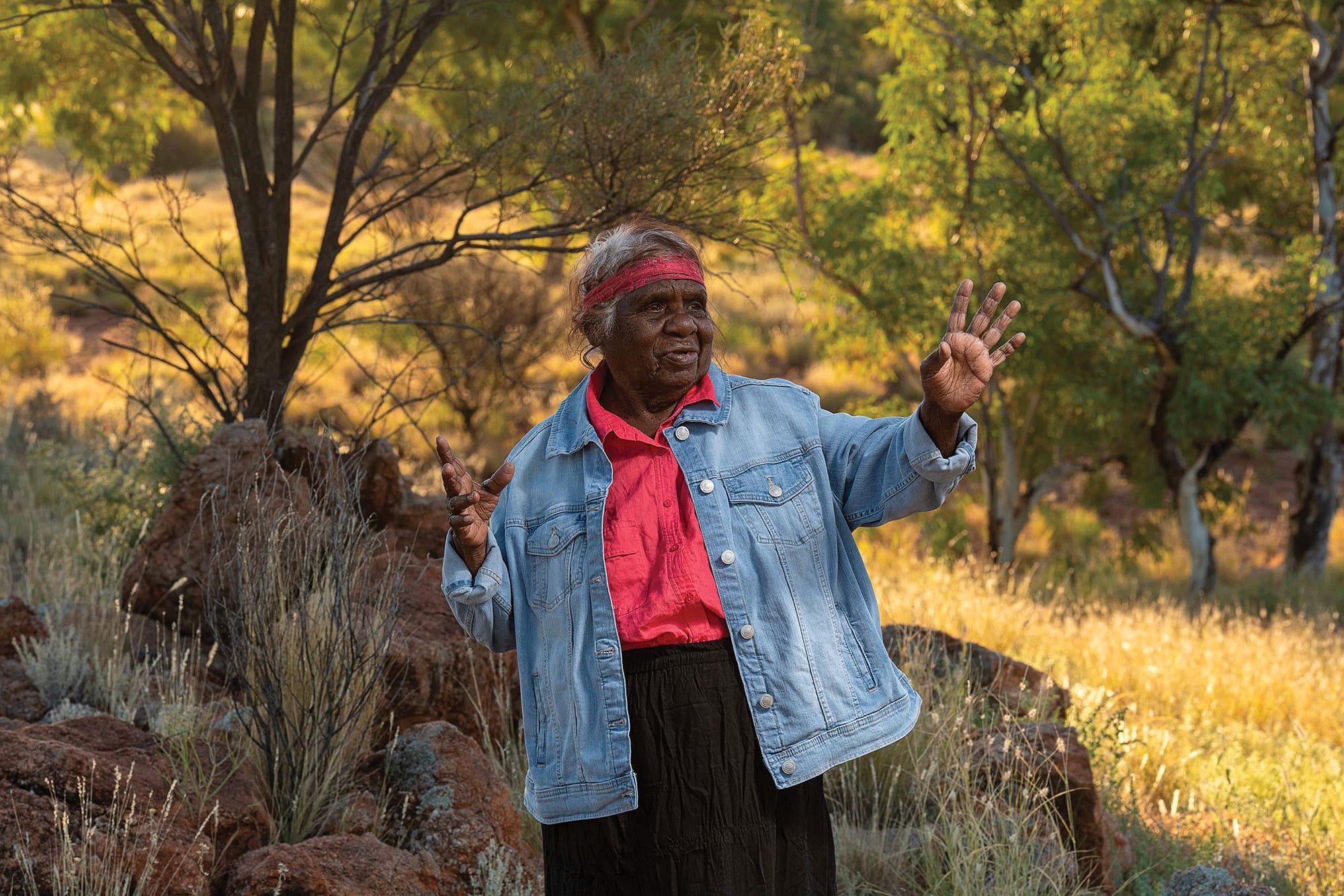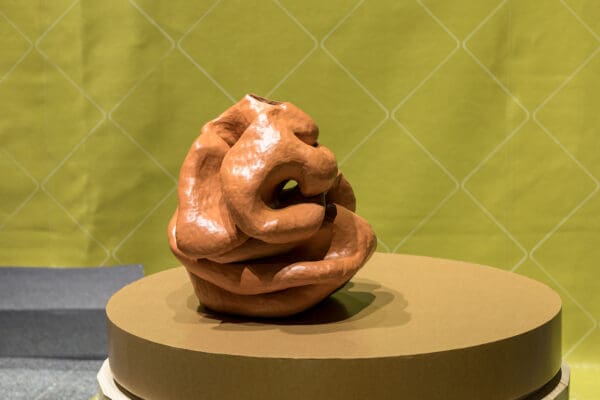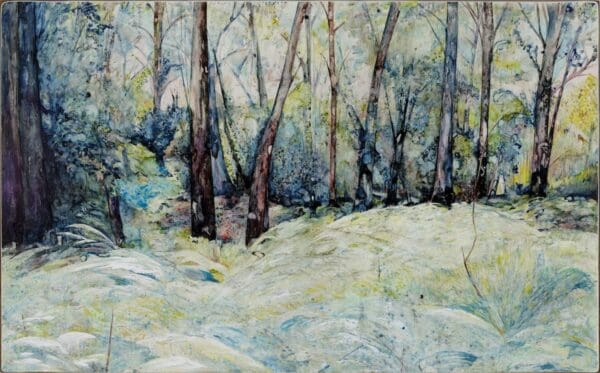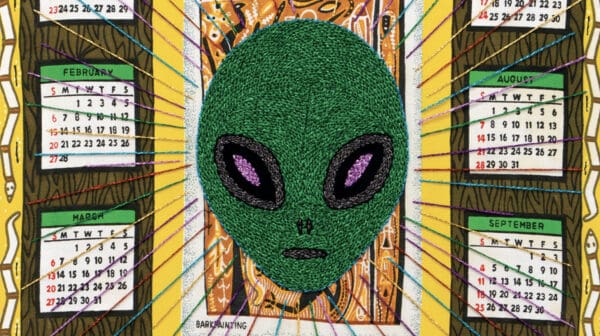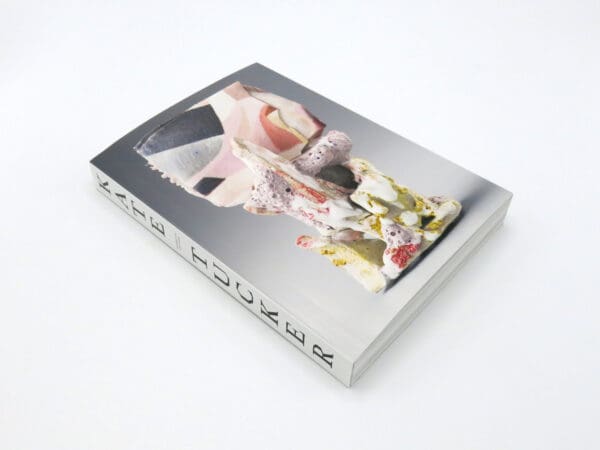The smoky black background peeking out behind white, lilac, and pale blue streaks and circles of Country emerges from the mind of senior Pitjantjatjara artist Betty Muffler onto large stretches of canvas. Working across painting, drawing, printmaking and tjanpi (native grass) weaving, Muffler maps the seen and unseen ways of the land, centering healing sites known to her community. Her care for Country is palpable through her gentle yet flourishing marks, tracing places that have experienced deep trauma; she bears witness to colonial harm and injustice that continues to scar the places she has connection to.
Almost 80 years old with numerous accolades and a Vogue cover (her artwork graced the magazine’s September 2020 issue), Muffler is now showing in the 2023 NGV Triennial at the National Gallery of Victoria. Her exhibiting painting, Ngangkari Ngura (Healing Country), 2022, was first commissioned by the Australian Centre for Contemporary Art (ACCA) for Like A Wheel That Turns, a show encompassing seven Australian artists each expanding the notion of what painting can be.
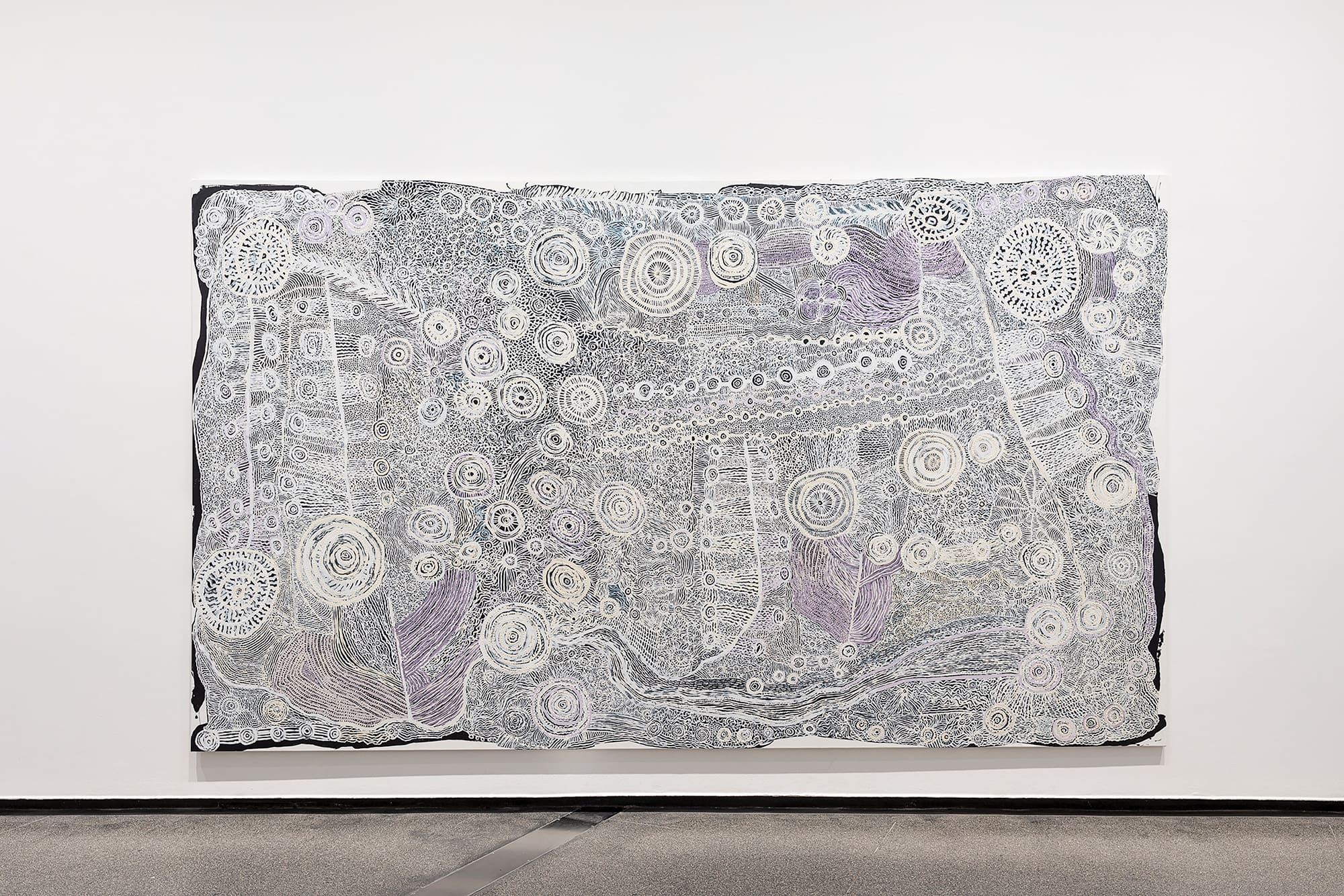
Muffler’s large-scale offering was a highlight, depicting waterholes and waterways from the view of Muffler flying overhead as an eagle. As she explained to artist Brook Garru Andrew in the exhibition catalogue, “My paintings are significant. They refer to my work as a healer of the body, and to my birthplace, the name of that place is Yalungu (south of Watarru in South Australia). Yes, I paint about my father’s eagle, and then I also paint a significant site for me— my birthplace—which relates to emus.”
“Ngangkari Ngura (Healing Country) spans five metres in width and three metres in height, immersing viewers deep into the heart of Country, falling within the Triennial’s thematic pillars of Magic, Matter and Memory.”
Such depth is visceral in Muffler’s moving and complex artwork. As Myles Russell-Cook, senior curator of Australian and First Nations arts at the NGV, says, “When I look at Betty Muffler’s art, I am captivated by how she intricately portrays the essence of her own Country, embedding her profound connection to the land into each brushstroke. Her work is like an expansive encyclopaedia without boundaries, like looking with the perspective of an eagle in flight.”
Ngangkari Ngura (Healing Country) spans five metres in width and three metres in height, immersing viewers deep into the heart of Country, falling within the Triennial’s thematic pillars of Magic, Matter and Memory. “Betty is an artist whose work can fit into any of these themes,” explains Russell-Cook, “because her art serves as a conceptual map that not only represents the physical aspects of a place but also delves into the spiritual dimension, drawing from her own personal experiences and ancestral memories.”
Muffler is a ngangkari (traditional healer), a role handed down by her father and with knowledge further learnt from her Aunties. Born in 1944 in Yalungu, near Watarru in South Australia, she grew up with her family at Ernabella Mission in Pukatja, APY Lands. She now lives and works in Indulkana, practising from Iwantja Arts. Muffler knows first-hand the severe devastation wrought on Country: she survived the British atomic weapons testing program at Maralinga during the 1950s and 60s, yet she lost many family members in its aftermath. During the testing, a ‘black mist’ covered the surrounding area, infecting waterways with radioactive fallout. Witnessing this horrific history affected Muffler, with the artist highlighting the sickness that continues to impact people, land and waterways—her healing work in the body, and the healing sites she identifies, are important to restoring Country and Aṉangu culture.
“Muffler works with the Ngaanyatjarra Pitjantjatjara Yankunytjatjara Women’s Council to support the health and well-being of those experiencing illness or crisis, travelling from community to community for healing; or sometimes they visit her.”
In this way, Muffler’s painting is part of the healing she does within her community, and the paintbrush is an extension of those connections. As both an artist and healer, her practice is critical in emphasising wellbeing and art making as indistinguishable.
Muffler works with the Ngaanyatjarra Pitjantjatjara Yankunytjatjara Women’s Council to support the health and well-being of those experiencing illness or crisis, travelling from community to community for healing; or sometimes they visit her. Yet as ngangkari, Muffler can travel while in transient sleep, moving as an eagle.
As the artist explained in her ACCA interview, “Often, I can already sense, even from a great distance, that someone is unwell and is coming to see me… at night time is when a lot of this work happens. It is revealed that someone unwell is at a particular place and then I transport myself to that place.” When looking upon the black background of the Triennial painting, the darkness parallels Muffler’s movement across landscapes in her sleep, locating those who need her healing.
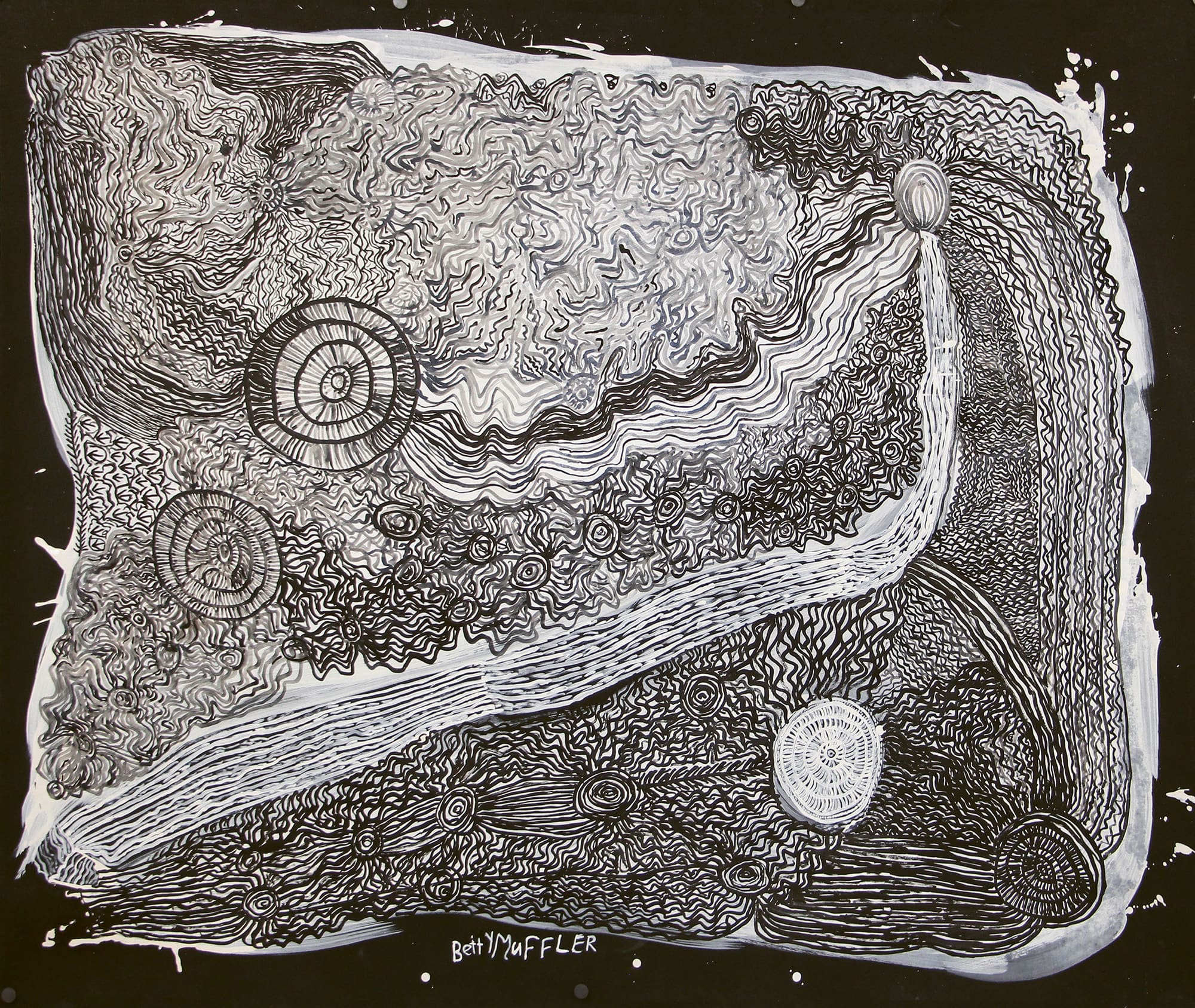
As much as she creates solo pieces, Muffler also works collaboratively with artists from Iwantja Arts, including a collaboration with Maringka Burton for Ngangkari Ngura (Healing Country), 2020. With both women being ngangkari, they worked together to paint the Countries where they were born, merging their stories as healers. In these paintings, Muffler has included depictions of healing hands, which are hard to see but are subtly present. The artist also works as part of the Tjanpi Desert Weavers, where her turmeric yellow, sky blue and natural baskets take a similar look as her paintings; she uses tiny stitching and grows the weaving over time.
In creating visual representations of her bloodlines, family members, Country, non-human kin and healing practices, Muffler’s art is a powerful statement to Australia to listen and care for the land as it cares for us, and for those whose hands draw and record its memories. As Myles-Cook says, “It offers a unique and profound way of perceiving the landscape.”
NGV Triennial
Group exhibition featuring Betty Muffler
National Gallery of Victoria (Melbourne VIC)
3 December—7 April 2024
This article was originally published in the November/December 2023 print edition of Art Guide Australia.

